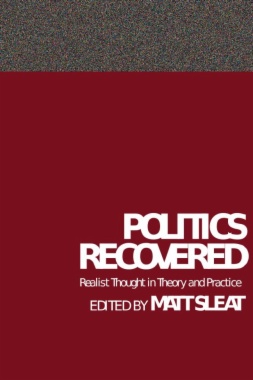Is political theory political enough? Or does a tendency toward abstraction, idealization, moralism, and utopianism leave contemporary political theory out of touch with real politics as it actually takes place, and hence unable to speak meaningfully to or about our world? Realist political thought, which has enjoyed a significant revival of interest in recent years, seeks to avoid such pitfalls by remaining attentive to the distinctiveness of politics and the ways its realities ought to shape how we think and act in the political realm.
Politics Recovered brings together prominent scholars to develop what it might mean to theorize politics “realistically.” Intervening in philosophical debates such as the relationship between politics and morality and the role that facts and emotions should play in the theorization of political values, the volume addresses how a realist approach aids our understanding of pressing issues such as global justice, inequality, poverty, political corruption, the value of democracy, governmental secrecy, and demands for transparency. Contributors open up fruitful dialogues with a variety of other realist approaches, such as feminist theory, democratic theory, and international relations. By exploring the nature and prospects of realist thought, Politics Recovered shows how political theory can affirm reality in order to provide meaningful and compelling answers to the fundamental questions of political life.
- Table of Contents
- Acknowledgments
- Introduction: Politics Recovered—on the Revival of Realism in Contemporary Political Theory, by Matt Sleat
- 1. The Truth in Political Realism, by Charles Larmore
- 2. Realism and Surrealism in Political Philosophy, by Glen Newey
- 3. Realism in Ethics and Politics: Bernard Williams, Political Theory, and the Critique of Morality, by David Owen
- 4. Anger, Humiliation, and Political Theory: Bringing the Darker Passions Back In, by William A. Galston
- 5. Legitimacy and Domination, by Paul Sagar
- 6. Disenchantment Versus Reconstruction: Walter Lippmann, John Dewey, and Varieties of Democratic Realism, by John Medearis
- 7. The Paradox of the Democratic Prince: Machiavelli and the Neo-Machiavellians on Ideal Theory, Realism, and Democratic Leadership, by Richard Bellamy
- 8. Politics and the “Pure of Heart”: Realism and Corruption, by Mark Philp
- 9. Democracy’s Limit: A Realist Response to the Quest for Transparency, by Rahul Sagar
- 10. The Case for Kinship: Classical Realism and Political Realism, by Alison McQueen
- 11. Getting Past Schmitt? Realism and the Autonomy of Politics, by William E. Scheuerman
- 12. Security and Poverty: On Realism and Global Justice, by Duncan Bell
- 13. Feminism and Realism, by Elizabeth Frazer
- 14. Political Realism: A Reality Check, by Michael Freeden
- List of Contributors
- Index

